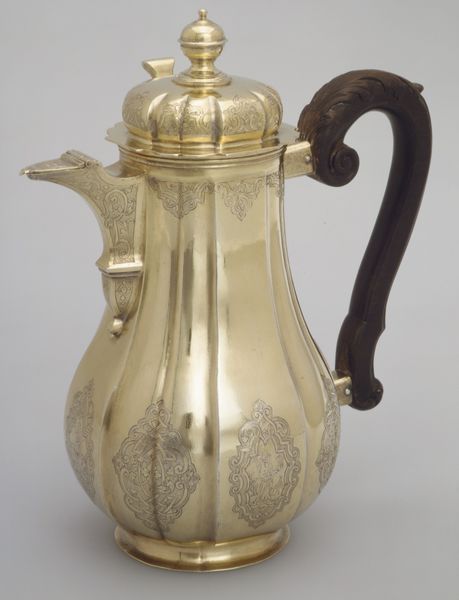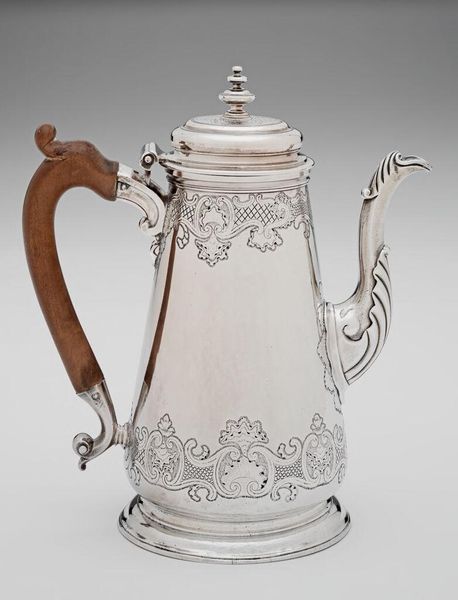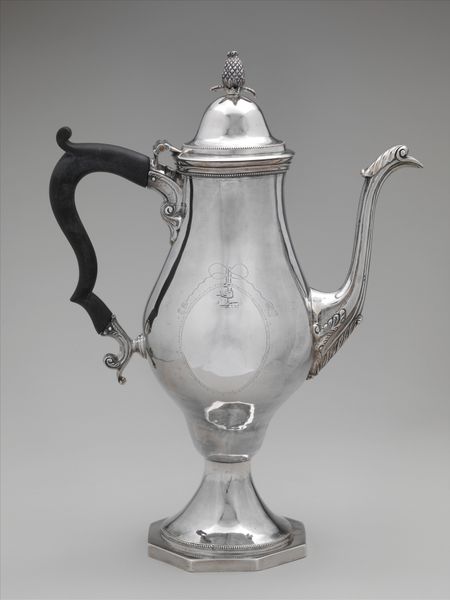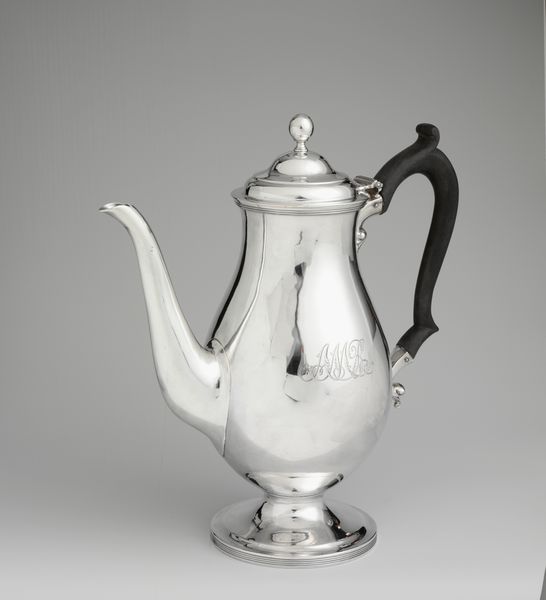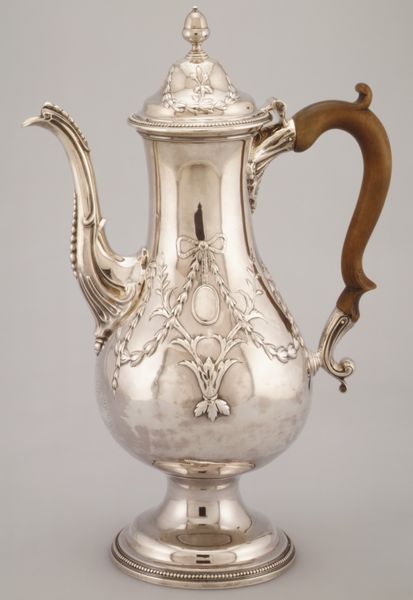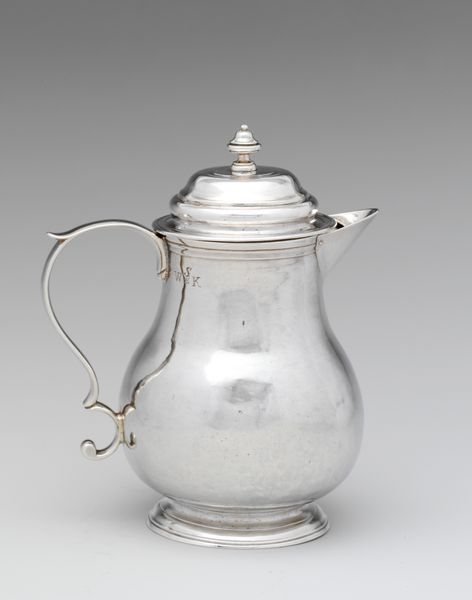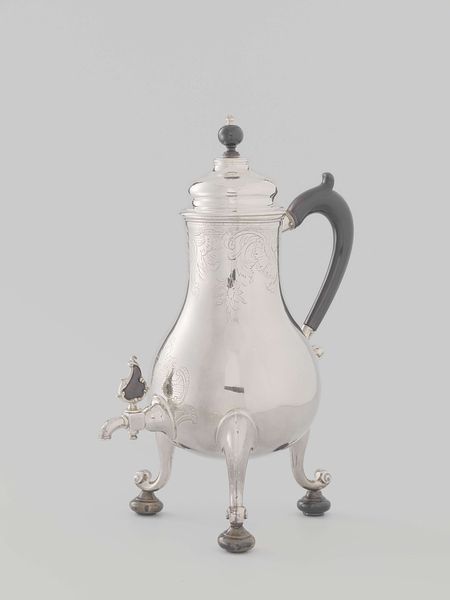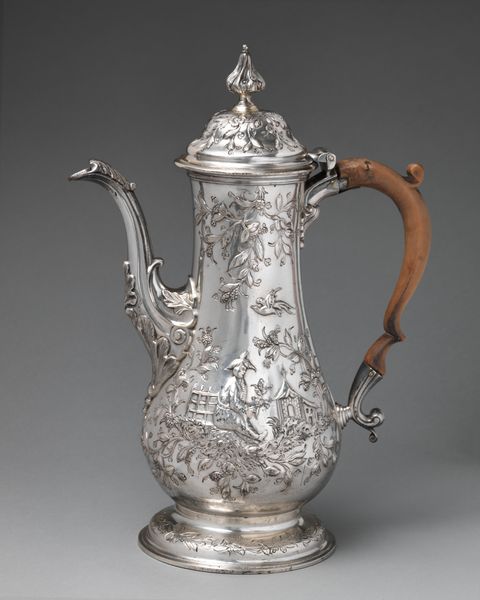
silver, metal, ceramic
#
silver
#
metal
#
ceramic
#
ceramic
#
united-states
#
decorative-art
Dimensions: 12 x 10 3/4 x 5 1/4in. (30.5 x 27.3 x 13.3cm)
Copyright: Public Domain
Editor: So, here we have a "Coffee Pot," crafted around 1775 by Philip Syng Jr., residing at the Minneapolis Institute of Art. The use of silver really grabs you; it has such a sleek, polished look. What's your read on this piece? Curator: Ah, yes, a gorgeous piece! For me, this coffee pot whispers tales of a burgeoning nation, a young America yearning for elegance amidst revolution. Don't you feel the echoes of transatlantic influence, hints of Georgian design tempered with a distinctly American practicality? Editor: I hadn't considered the American practicality aspect, just the elegance. I was thinking, fancy breakfasts! Curator: (chuckles) Exactly! But imagine the silversmith, forging beauty while the colonies were forging independence. That handle, carved probably from a native wood, is an earthly, tangible touch. It brings this aristocratic dream down to solid ground, does it not? Does it speak to something grounded for you? Editor: It does now that you mention the contrast. The wood seems almost… humble against all that shine. Curator: Precisely! And what do you make of the spout? See how it elegantly curves? Editor: It’s like a swan's neck! Is that on purpose, you think? Curator: Possibly! Or just an artistic impulse from the maker? It is interesting to think about. But I see a burgeoning class, mimicking European courts, while defining its own style. Each curve, each choice whispers intentions of status. Editor: That makes me look at the coffee pot with new eyes. The mix of materials is a language of class and rebellion at the same time. I'll never see silverware the same way again. Curator: Nor should you! Everyday objects holding history, what is more incredible than that?
Comments
No comments
Be the first to comment and join the conversation on the ultimate creative platform.

